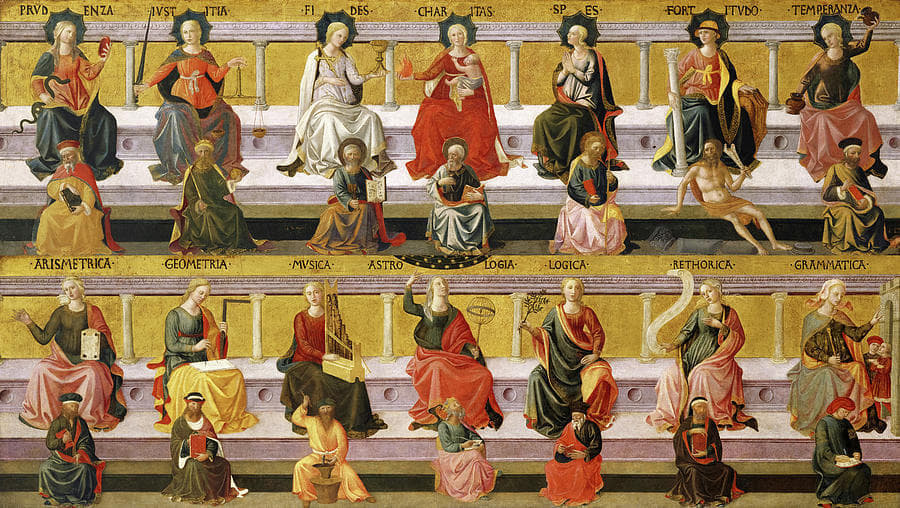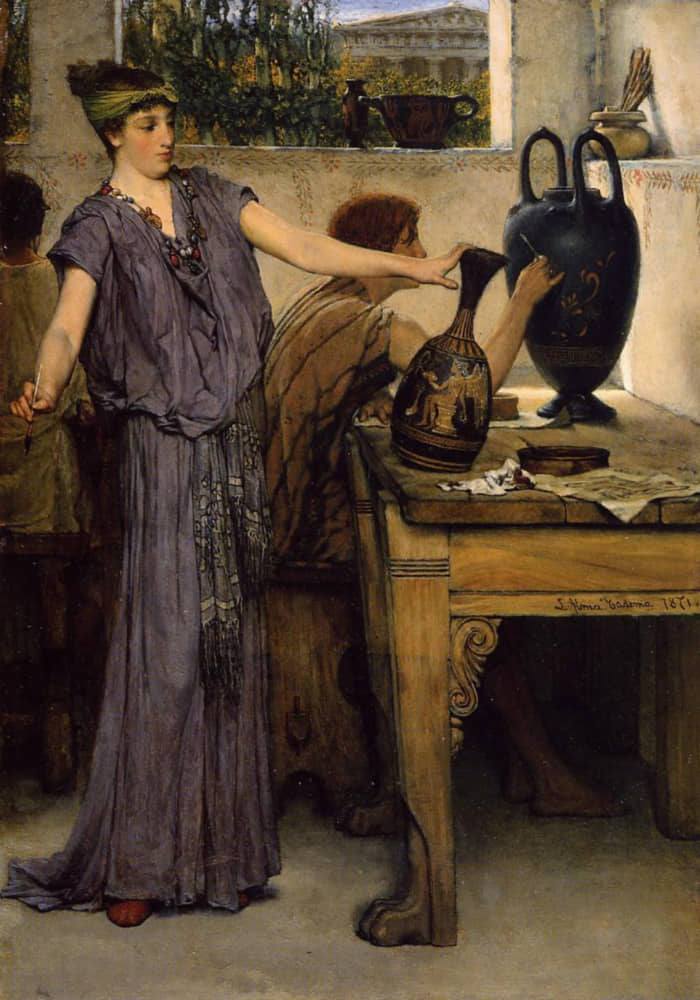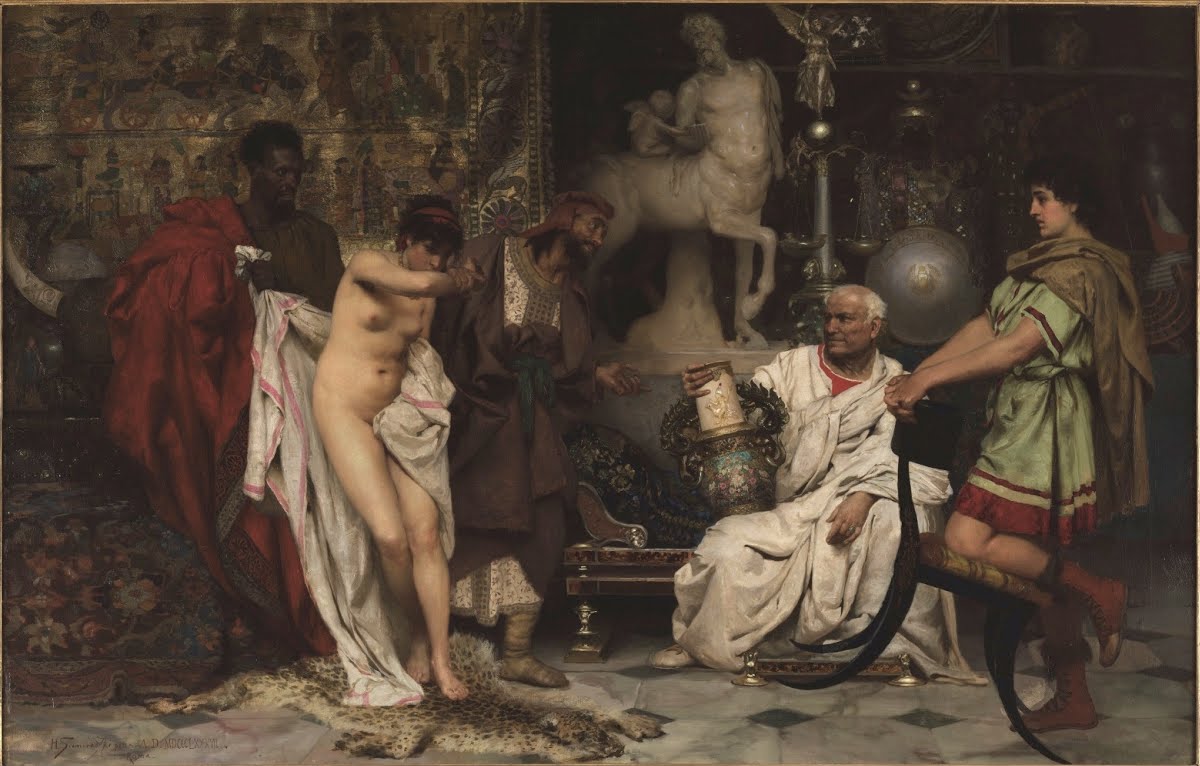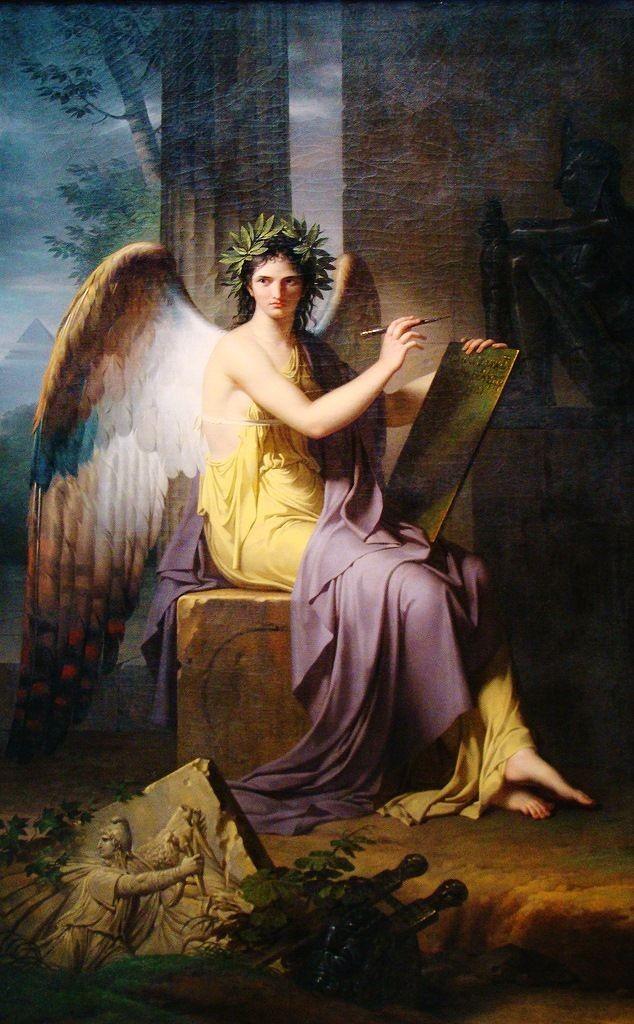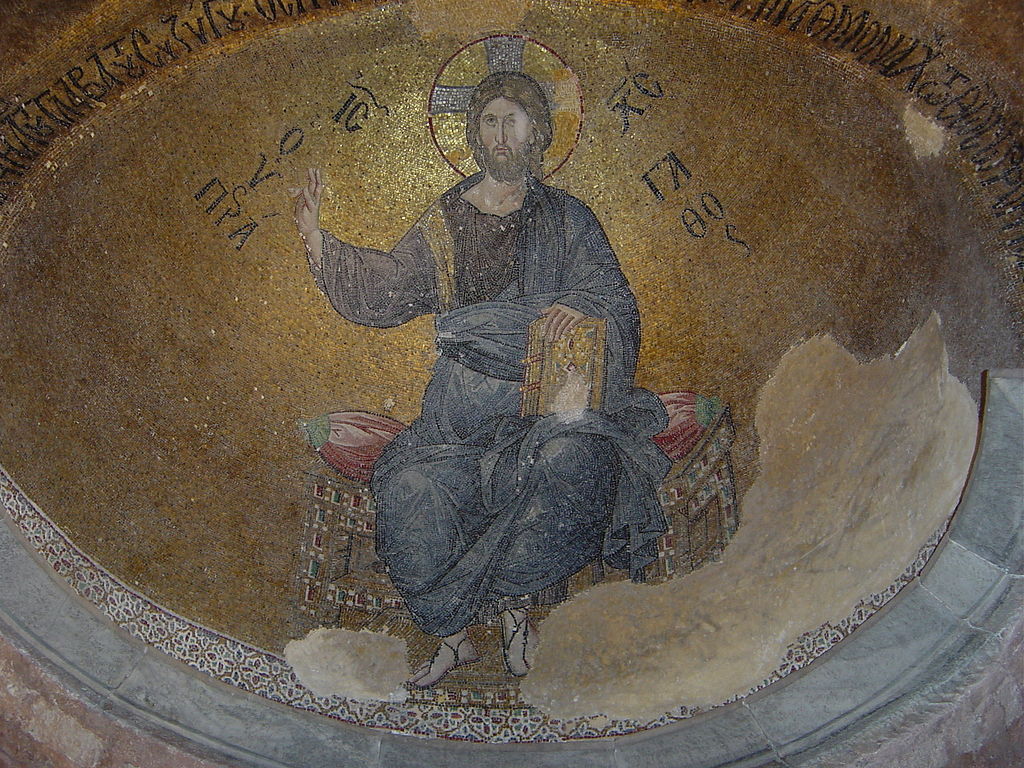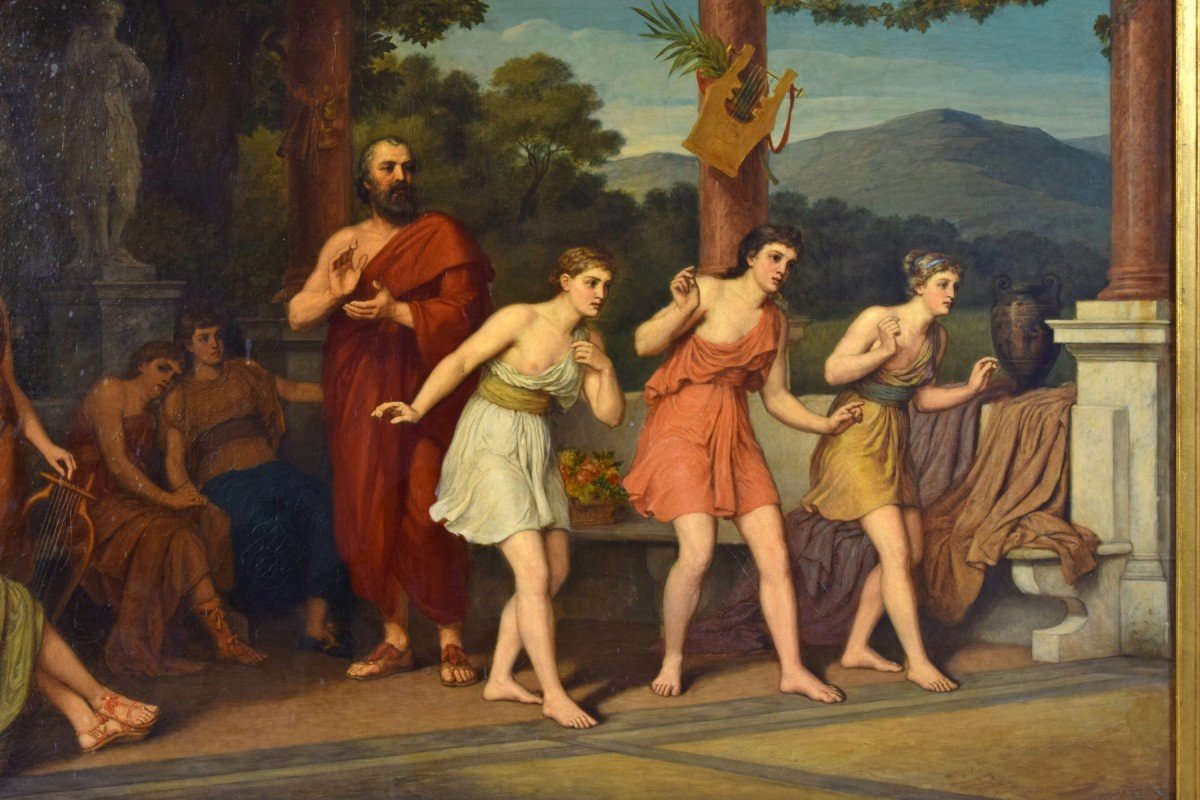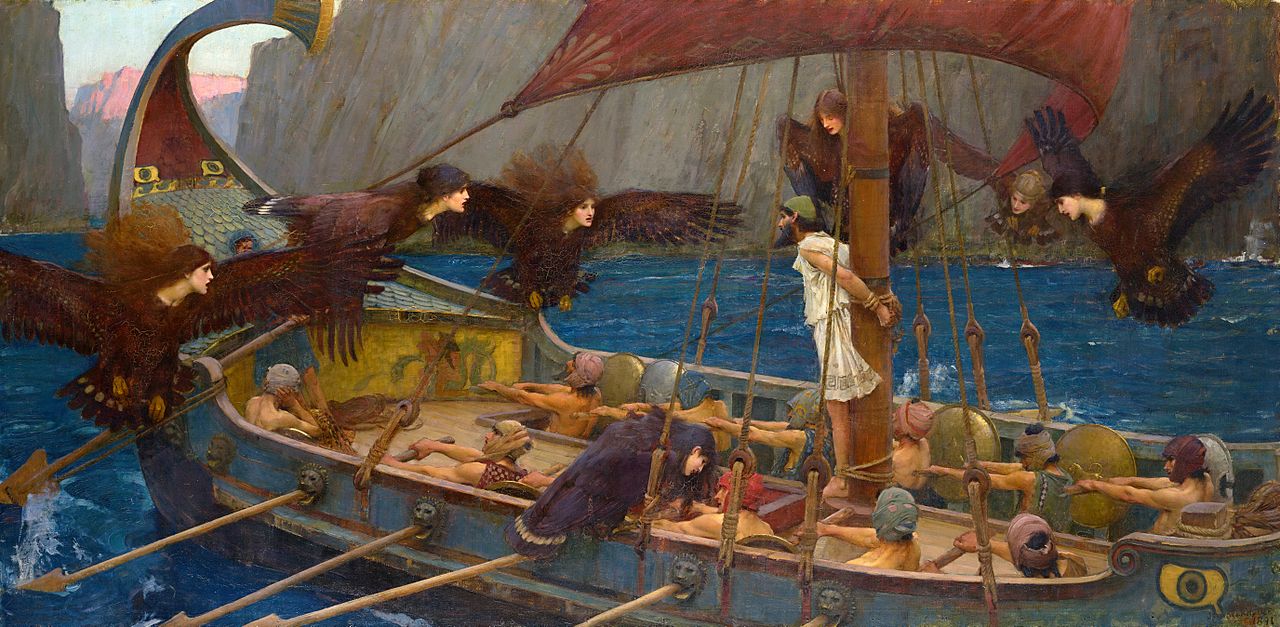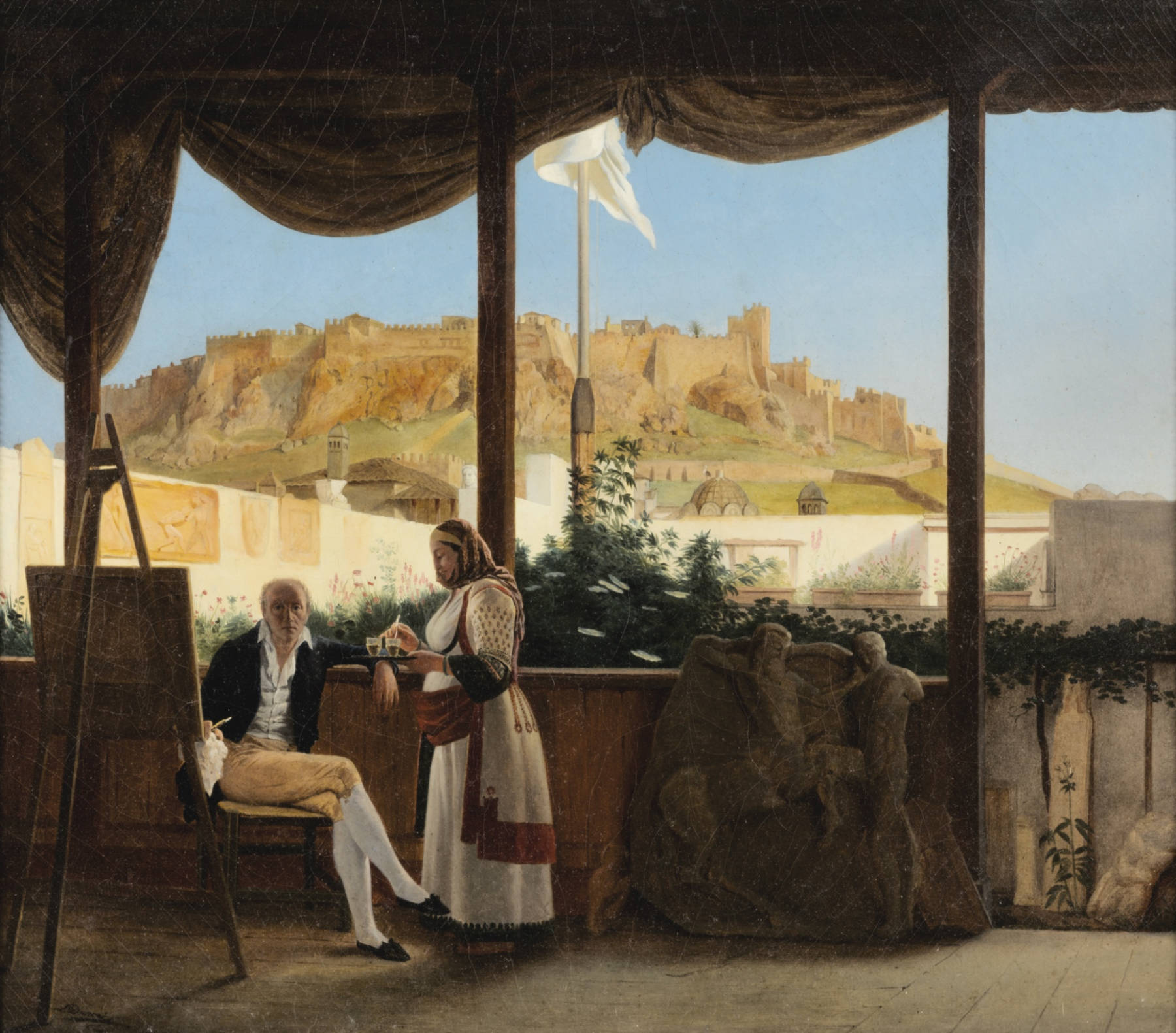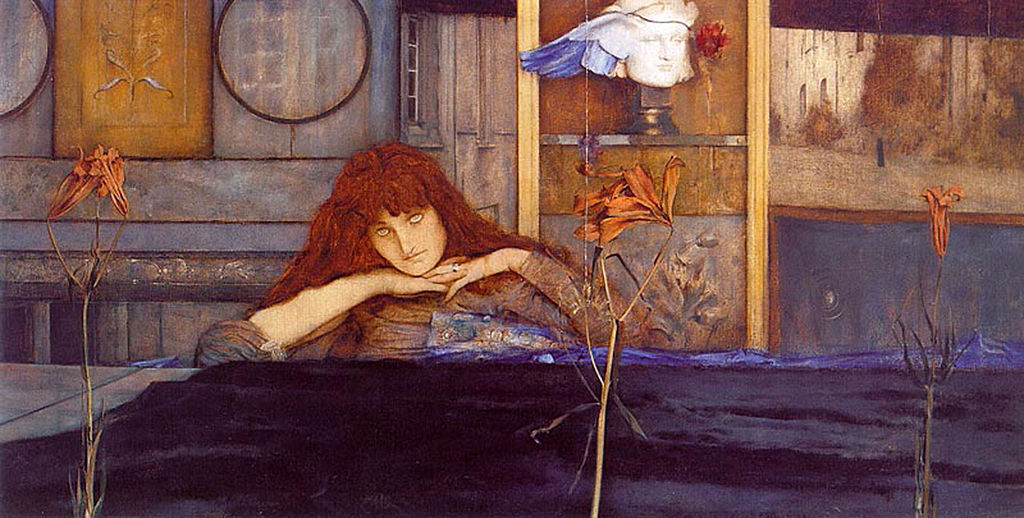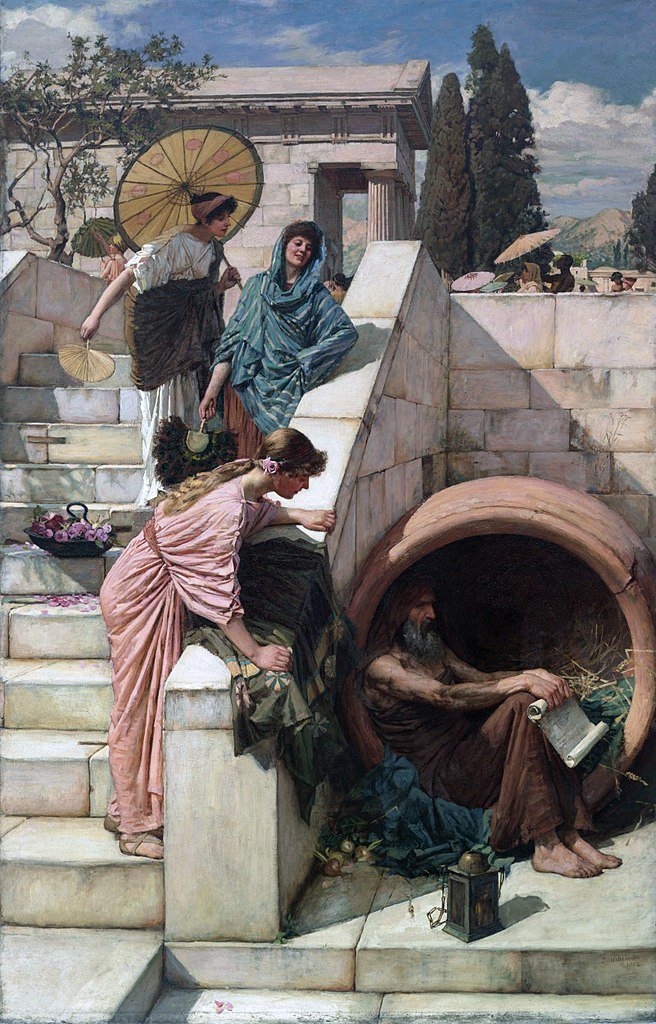In much of my recent research, I have criticized modern philosophy for being un-philosophical, at least if, by the term “philosophy,” we mean the practice in which the Ancient Greeks engaged [See my Wisdom’s Odyssey from Philosophy to Transcendental Sophistry, Cartesian Nightmare: An Introduction to Transcendental Sophistry, and Masquerade of the Dream Walkers: Prophetic Theology from the Cartesians to Hegel]. At least two features essentially characterize ancient philosophy: (1) realism and (2) the problem of the one and the many. Much of my recent work has involved contrasting the essentially realist stance of the Ancient Greeks to the subjective idealist stance of modern thinkers. In this paper, I turn to a second mark of Ancient philosophy: the problem of the one and the many.
Many contemporary philosophers treat the problem of the one and the many as an isolated issue within Ancient Greek philosophy, as a puzzle that confounded early Greek physicists. In so doing, they display a severe misunderstanding of philosophy as the Ancient Greeks practiced it. This paper’s purpose is twofold: (1) to examine the way, in the Golden Age of Ancient Greek philosophy, Aristotle practiced philosophy in terms of relating a one to a many, and (2) to use this examination to throw light on Aristotle’s understanding of virtue.
While some contemporary thinkers might find my thesis shocking, glaring examples of the predominance of the notions of unity and multiplicity in the Ancient Greek mind fill the works of Plato and Aristotle. Consider, for example, how, in Plato’s Crito, Socrates disdains Criton’s suggestion that he consider what the “many” might think about whether or not he should leave prison. Socrates says his concern is not, and never has been, about the opinions of the many, but “of the wise, …of the one qualified person” (47B). Again, in the Meno, Socrates criticizes Menon for constantly giving him “many different” virtues in response to Socrates’ continued request that Menon tell him the “one” virtue that is in every act of virtue that makes a virtue a virtue [Meno, 72B-C, 74A-B, 79A-C]. In the Republic, Socrates criticizes Thrasymachos’ notion of power precisely because the supposedly powerful person that Thrasymachos describes lacks unity of mind, and is, in Socrates’ estimation, therefore, weak [Republic, Bk. I, 35IA-352B].
According to Socrates, single-mindedness makes an individual and a city strong [Bk. 2, 374B-D]. Hence, the healthy city for which he searches as the archetype in which to find justice is, as he says, one in which one man has one work because, he states, “it is impossible for one man to do the work of many arts well” [Republic, Bk. 4, 42lE-422E]. Socrates also tells us in the Republic that the healthy city, the only one of which we can “properly use the name,” is one city, not many. He adds, we must apply “a greater predication …to the others. For they are each one of them many cities, not a city” [Republic, 42lE-422E]. Finally, in the Gorgias, Socrates chastises Callicles, the sophistic politician, for loving the Athenian demos more than he loves the one universal human love to possess unity of soul. He states: “I think it better my good friend that my lyre should be discordant and out of tune, and any chorus I might train, and that the majority of mankind should disagree with and oppose me, rather than that I, who am but one man, should be out of tune with and contradict myself” [48lD-482C].
The case with Aristotle is the same. Aristotle considers philosophy to be identical with science. For him science consists of certain knowledge demonstrated through causes [Posterior Analytics, Bk. l, I, 7Ib8-30]. Science, or philosophy, studies a multitude of beings, a many, a genus, and seeks to demonstrate essential properties of the genus by reasoning according to necessary principles universal, or one, to the genus. For him causes are principles, and principles are starting points of being, becoming, or knowing [Bk. l, 41, 87a3I-bI7; Metaphysics, Bk. 5, I, IOI2b34.1013a23]. Aristotle, in turn, considers points to be ones, unities, or indivisibles. A point is a one or indivisible with position, principally spatial position or position in a continuum. A principle is, then, in some way, a one [Metaphysics, Bk. 3,4, IOOlbl-I002blO, Bk. 5,6, IOI6b18-32].
Aristotle further maintains that being and unity are convertible notions. In reality being and unity are identical. They differ only conceptually. We derive our concept of unity by adding to the concept of being the notion of indivisibility, just as we derive our notion of number from division of unity, of a continuum [Metaphysics, Bk. 4, 1,I003b22-34, Bk. 10, I, 1052aI5-1053b8, and 1053b23-24].
This Ancient Greek philosophical tendency to convert the notions of being and unity is crucial for understanding the nature of the Ancient Greek conception of philosophy and virtue. To recognize how crucial it is, we need only consider the extent to which Aristotle devoted attention to the notion of unity in his Metaphysics. Next to examining the notion of being, he devotes much of the latter part of his treatise to the notion of unity and its properties [Metaphysics, Bk. 10].
The crucial importance of the notions of unity and plurality in Aristotle’s philosophy also appears in his criticism of Plato’s notion of Forms and mathematical beings as “ones outside the many” that St. Thomas Aquinas says Plato used to protect the relation of demonstration to “eternal things.” In his Commentary on the Posterior Analytics of Aristotle, Aquinas maintains that Aristotle understood demonstration to require that a one exist “in many and about many.” For Aristotle and Aquinas demonstration requires a middle term, a one that is the same in many, or a universal unequivocally predicable of a many. If no one something exists the same in a multitude, no universal exists unequivocally predicable of many beings. This makes demonstration, and philosophy, impossible [Commentary on the Posterior Analytics of Aristotle, Bk. I, I. 19; Posterior Analytics, Bk. I, II, 77a5-9].
Aristotle’s division of the speculative sciences further supports my claim that we cannot understand his philosophy or Ancient Greek philosophy unless we understand all Ancient Greek philosophy as an extended reflection on the problem of the one and the many. Aristotle’s division of speculative philosophy is threefold: physics, mathematics, and metaphysics. Why? Aristotle was no Christian. He had no special affinity to a trinity. Why not seven speculative sciences, like the classical seven liberal arts? Or twelve? Or one hundred?
The answer lies in the fact that, for Aristotle, we take demonstrative principles from their subject, to which necessary, or per se, principles essentially belong. Aristotle maintains that science requires per se. predication. Per se principles consist of the principles of proximate substance and its essential accidents, accidents that have their cause in a proximate subject and necessarily and always inhere in the subject [Posterior Analytics, Bk. I, II, 75aI8-37. See Commentary on the Posterior Analytics of Aristotle, Bk. 1, I. 14].
Because science, or philosophy, studies the many different ways many things relate to one proximate subject, it studies the way many things, more or less, share in the unity of a primary subject. Every science, not just metaphysics, chiefly and analogously studies the principles and causes of substances to understand the properties of the many species of which we predicate a genus [Metaphysics, Bk. 12, I, I069aI8-1069b32, Posterior Analytics, Bk. 2, 2, 90bI4-16]. Aristotle, in fact, tells us that ”there are as many parts of philosophy as there are kinds of substance” [Metaphysics, Bk. 4, 2, I004a2-3]. As Aquinas notes, “demonstration is concerned with things which are per se in something” [Commentary on the Posterior Analytics of Aristotle, Bk. 2, I. 2].
For Aristotle, science chiefly studies the principles and causes of its proximate substance and its per se accidents, not just any substance and any accidents [Posterior Analytics, Bk. 2, 2, 90bI4-16]. Through these principles we come to know the proper accidents, or properties, of all the species that belong to the genus. For this reason, Aristotle maintains that no science investigates accidents as such. Take, for example, the art of home building. A completed house can have an infinite number of accidents related to it. It can be pleasant to some people, painful to others, helpful to some, harmful to others, and so on. The builder’s art bears only on those accidents that are essential properties of a house, such as its intrinsic shape and size [Metaphysics, Bk. 6, I, I026bl-25]. Hence, for Aristotle, the definition of a per se accident, like odd or even, mentions in its definition its specific subject, for example, number, which is essentially odd or even, while a non-per se accident, like the color white, makes no mention of an animal because animals are not essentially color specific [Posterior Analytics, Bk. 1,6, 75aI8-37].
Aristotle conceives the speculative sciences to be three in number precisely because only substance and its two intrinsic accidents, quantity and quality, can operate as per se principles. Quantity and quality actually inhere in substance and remain with a substance for the duration of its existence. All other accidents relate to substance through their relation to a substance’s quantity or quality. Hence, in some way, both these intrinsic accidents account for different ways in which a substance can be actually and intrinsically one, the different ways we can know substance to be per se, and, apart from substance, can know the different proximate subjects of science.
For Aristotle, then, in some way, the whole of philosophy and every science involves coming to know how a multiplicity is essentially one. As Aquinas notes, every science studies many things referred to one primary thing, a substance, with which it is chiefly concerned. It considers this thing analogously, that is, according to the same formal aspect and, also, according to different relationships, ‘just,” as he says, “it is clear that one science, medicine, considers all health-giving things” [Aquinas, Commentary on the Metaphysics of Aristotle, Bk. 4, I. 1, n. 544. See Annand A. Maurer (ed.), Commentary on the de Trinitate of Boethius, Questions V and VI. St. Thomas Aquinas: The Division and Methods of the Sciences, q. 6, a. 3, c., footnote 15].
Aristotle maintains as many species of being exist as species of unity exist, and that one science, metaphysics, has the job to study these species of unity, namely, ”the same and the similar and the other concepts of this sort” [Metaphysics, Bk. 4, 3, I003b36-37, Bk. 10, I, 1053b23-I04aI9]. Just as being is analogously predicable of all genera, since being and unity are convertible notions, Aristotle considers unity to be analogously predicable of all the different genera. Hence, he states that we may refer almost all contraries to unity as to their starting point [Metaphysics, Bk. 4, 3, I003b36-37, Bk. 10, I, 1053b23-I04aI9]. Aquinas explains Aristotle’s position in this way:
since being and unity signify the same thing …there must be as many species of being as there are species of unity, and they must correspond to each other. For just as the parts of being are substance, quantity, quality, and so on, in a similar way the parts of unity are sameness, equality and likeness. For things are the same when they are one in substance, equal when they are one in quantity, and like when they are one in quality. And the other parts of unity could be taken from the other parts of being, if they were given names. And just as it is the office of one science [first] philosophy to consider all the parts of being, in a similar way it is the office of this same science to consider all the parts of unity, i.e., sameness, likeness, and so forth [Aquinas, Commentary on the Metaphysics of Aristotle, Bk. 4, I. 2, n. 56 I].
No science considers just any parts of being, however. Nor does it consider them in just any way. It considers a genus, an order of species. And it considers the genus relative to contrary opposites that compose it and to a first proximate substance to which, in different, relatively close and distant, ways, analogous ways, the members of the genus relate. Each science chiefly studies this substance.
Aristotle maintains that a genus is a kind of whole, one which, for philosophy, or science, primarily refers to the immediate, proximate, first, or proper subject of different per se accidents, or unities, within the genus [Metaphysics, Bk. 5,24, I023a26-32, and 26, I024a29-1024b4]. Aquinas explains that this sense of genus is different from the sense of genus as signifying the essence of a species. He says:
This sense of genus is not the one that signifies the essence of a species, as animal is the genus of man, but the one that is the proper subject in the species of different accidents. For surface is the subject of all plane figures. And it bears some likeness to a genus, because the proper subject is given in the definition of an accident just as a genus is given in the definition of its species. Hence the proper subject of an accident is predicated like a genus [Aquinas, Commentary on the Metaphysics of Aristotle, Bk. 5, I. 22, n. 1121].
Surface is the immediate subject of all colors and plane figures. As such, it is the referential source of intelligibility of all surface bodies. All such figures are subjectified in substance by being proximately subjectified, and quantitatively unified, in a surface. Hence, when geometricians predicate surface of different plane (surface) figures they predicate surface analogously. In so doing, analogously they resemble logicians. When both geometricians and logicians predicate a genus, they include the genus in the species’ definition. Hence, geometricians also predicate in a way analogous to the way logicians predicate the genus that signifies the essence of a species. In both cases the definition of the species refers to its subject genus, its substance, for its intelligibility. But the substance of the geometrician is a surface body, not the essential definition of the logician.
Aristotle further maintains that one proximate subject cannot be reducible to another. Those things are generically diverse “whose proximate substratum is different, and which are not analyzed the one into the other nor both into the same thing (e. g., form and matter are different in genus)” [Metaphysics, Bk. 5,28, 1024bIO-I3]. Aquinas explains Aristotle’s meaning by referring the notion of proximate subject to subjectifying, or common, matters. Thus, he states: “[A] solid is in a sense reducible to surfaces, and therefore solid figures and plane figures do not belong to diverse genera, … but celestial bodies and lower bodies are diverse in genus inasmuch as they do not have a common matter” [Commentary on the Metaphysics of Aristotle, Bk. 5, I. 22, n. 1125]. He adds, “In another sense those things are said to be diverse in genus which are predicated ‘according to a different figure of the category of being,’ i.e., of the predication of being [Commentary on the Metaphysics of Aristotle, Bk. 5, I. 22, n. 1126]. He immediately notes, however, that the natural scientist and metaphysician consider a genus as the first subject of accidents, not as what is said of different categories of being, which is the way a logician considers generic diversity:
Now it is clear, from what has been said, that some things are contained under one category and are in one genus in this second sense, although they are diverse in genus in the first sense. Examples of these are the celestial bodies, and colors and flavors. The first way in which things are diverse in genus is considered rather by the natural scientist and also by the philosopher [that is, the metaphysician], because it is more real. But the second way in which things are diverse in a genus is considered by the logician, because it is conceptual [Commentary on the Metaphysics of Aristotle, Bk. 5, I. 22, n. 1127. Bracketed material is my addition].
Within a different context, Armand A. Maurer explains Aquinas’s distinction between the way logicians conceive of a genus and the way natural philosophers and metaphysicians do:
From the point of view of the logician, material and immaterial things can be brought under the same genus (for example, substance), because he considers them only as concepts in the mind. From the point of view of the natural philosopher or metaphysician they do not come under the same genus because these philosophers consider the natures of things as they actually exist in reality, and in actual existence the substance of material things is not the same as that of immaterial things. Hence from a logical point of view, the genus of substance is predicated univocally of all substances; but from the point of view of the natural philosopher and the . metaphysician it is predicated analogically [Commentary on the de Trinitate ofBoethius, Questions Vand VI. St. Thomas Aquinas: The Division and Methods of the Sciences, q.6, a. 3, C., footnote 15].
Inasmuch as philosophy studies real being, or substance, as the proximate cause of per se accidents within a multiplicity of beings, or a genus, Aristotle maintains that every science studies opposites and first principles. That every science studies opposites is evident. Medicine, for example, studies disease and health. Grammar studies disagreement and agreement. Politics studies war and peace. Every science studies opposites because every science studies a multiplicity of differences according to a principle of unity.
Every science concerns itself with opposition, negation, completeness, and privation precisely because it studies substances through a principle: unity, and because opposition, negation, completeness, and privation are essentially connected to the concept of unity, or of being one. What is one is undivided, is not possessed of, is deprived of, division, and is the opposite of division or plurality. As Aquinas notes, we derive the concept of unity from the notion “of order or lack of division’ [Commentary on the Metaphysics of Aristotle, Bk. 4, I. 2, n. 553]: The concept of unity entails, depends on, negation and privation, both of which are species of opposition. What is one is undivided, deprived of, and opposed to, division, or plurality. Our concept of “unity,” he tells us, includes an implied privation, “a negation in a subject,” like blindness in a human being [Commentary on the Metaphysics of Aristotle, Bk. 4, I. 3, no. 564-566].
Some people might disagree with Aristotle and Aquinas, and maintain that we derive our awareness of plurality from a positive concept of unity. Aristotle himself claims that the one is the principle by which we know number [Aristotle, Metaphysics, Bk. 9, 10, 1052bI9-22]. Still, Aristotle replies to such an objection that the starting point of all of our knowledge, even our knowledge of notions like unity, cause, and principle, is our senses [Aristotle, Physics, Bk. I, I, 184aI7-2 I]. Our first perception is of composite things, a many, confusedly grasped as a one. Hence, we derive our concepts, definitions, and first awarenesses of first principles by negations of the way we sensibly perceive them as composite beings. Unity is the most primary privation, consisting of negation in a subject. Plurality stems from unity, and causes diversity, difference, and contrariety. Hence, we know first principles negatively in reference to the way we perceive their contraries [Aristotle, Physics, Bk. I, I, 184aI7-2 I. See also Aquinas, Commentary on the Metaphysics of Aristotle, Bk. 4, I. 2, n. 553].
Indeed, Aristotle maintains that “all things are contraries or composed of contraries, and unity and plurality are the starting points of all contraries” [Aristotle, Metaphysics, Bk. 4, 2, 1005a3-5]. The reason for this is that contraries are differences, extreme differences that exist within a genus that relate as most complete and most deprived possession of a form. As such, contrariety is a kind of plurality, because difference is a pluralization of unity, and an opposition between possession and privation. Contrariety thus consists in the greatest distance of difference between extremes of species within a genus. The crucial points to note are that contraries are differences, that what is different is what is not the same, or not one, is multiple, and that differences involve opposition between possession and privation [Aristotle, Metaphysics, I004b27-1 005a13b, Bk. 10,3, 1055a32-39. See also Aquinas, Commentary on the Metaphysics of Aristotle, Bk. 4, I. 4, no. 582-587].
For Aristotle, then, all otherness derives from pluralizing, unequalizing, unity. Unity, or what is undivided, in tum, is the ground of all sameness, equality, and similarity. Indeed, Aristotle thinks that sameness, equality, and similarity are analogous extensions and the proper accidents of unity. As such, they are the ground of all plurality, which, in tum, is the ground of all difference. For Aristotle, difference is plurality of unity, and the opposite of unity. The analogous extensions and properties of unity, however, are unities. To be the same, equal, or similar, therefore, is, analogously, to be one [Aristotle, Metaphysics, Bk. 4, I, I004a34-1 005a18. See also Aquinas, Commentary on the Metaphysics of Aristotle, Bk. 4, I. 4, no. 582-587].
This means that to be different, unequal, or dissimilar is to be many, to be a plurality of unity. But the one and the many are opposed, are, indeed, together with being and privated being, the ground of all opposition and contrariety and are the primary contraries into we reduce all other contraries [Aristotle, Metaphysics, Bk. 10,3, 1055a33-1055b39. See also Aquinas, Commentary on the Metaphysics of Aristotle, Bk. Bk. 10, I. 6, n. 2058].
This being so, the principles of sameness, equality, and similarity and their opposites and contraries (difference, inequality, and dissimilarity) are the ground of all per se accidents and of the relative first principles of all the sciences. This must be so because they are the most fundamental oppositions between unity and plurality, the opposition which grounds all other oppositions and into which all others are reduced. And science studies the principles of opposition within a genus [Aristotle, Metaphysics, Bk. 10,3, I054a20-1 055b39. See also Aquinas, Commentary on the Metaphysics of Aristotle, Bk. 10, I. 4, no. I998-2022, 2035].
A main reason, then, that Aristotle divides the speculative sciences into three classes is because he maintains that three pairs of specifically distinct kinds of unity, plurality, and opposition exist (sameness/difference, equality/inequality, and similarity/dissimilarity) that serve as the ground of per se accidents and of principles of contrariety for understanding the proximate subjects of science, these proximate subjects being constituted by distinctive kinds of common matter.
Aristotle tells us that two of these common matters are sensible. The third is “immovable and imperceptible” [Aristotle, Metaphysics, Bk. 12, I, I069a30-I069b3]. The two classes of sensible substance consist of perishable substances like animals and plants, and imperishable substances, like the movers of the celestial bodies, which physics investigates. The third class consists of objects with intelligible matter, that is, the objects of mathematics, and separate substances, that is, beings that can, do, or can be considered to exist apart from any and all matter [Aquinas, Commentary on the Metaphysics of Aristotle, Bk. 12, I. 2, nn. 2425-2426]. Hence, Aquinas maintains that “as many parts of philosophy” exist “as there are parts of substance, of which being and unity are predicated and of which it is the principle intention or aim of this science to treat” [Aquinas, Commentary on the Metaphysics of Aristotle, Bk. 4, I. 2, n. 563].
What makes these common matters proper subjects of science is more than the fact that they are common to a multiplicity: they comprise the matter of a proximate subject containing a specific principle of unity that grounds the per se differences and principles of opposition and contrariety within the limits of a proximate-subject genus.
Hence, as Aquinas says, “geometry speculates about a triangle being a figure having ‘two right angles,’ i.e., having its three angles equal to two right angles; but it does not speculate about anything else, such as wood or something of the sort because these things pertain to a triangle accidentally.” The reason geometry speculates about its subject genus in this way, through the principle of equality, and does not speculate about other sorts of likenesses or differences is because, as Aquinas adds, “science studies those things which are beings in a real sense, …and each thing is a being insofar as it is one” [Aquinas, Commentary on the Metaphysics of Aristotle, Bk. 6, I. 2, n. 1176]. That is, the proximate subject of geometry, its common matter, is not material substance, but quantified material substance, is not body, but surface body. This body makes a substantial body to be a geometrical body. And equality is the quantitative principle of unity by which we grasp all the samenesses and differences that relate to a body as a continuum body, such as having three angles quantitatively the same as two right angles. In short, due to the relation they have to different common matters, sameness, equality, and similarity are the formal objects through which we conceive all the different sciences.
To put all this in another way, an assumption about proximate material substance underlies Aristotle’s notion of philosophy, and an assumption about unity underlies his philosophy of proximate substance. Beings that belong to the same genus share a common matter and a common unit measure through which we know them to be one [Aristotle, Metaphysics, Bk. 10, 4, I055a4-1 055a32. Aquinas, Commentary on the Metaphysics of Aristotle, Bk. 10, I. 5, no. 2024-2026]. Indeed, Aristotle holds that, like the properties of sameness, equality. and similarity, ”to be a measure” is a property of unity [Aristotle, Metaphysics, Bk. 5, 6, 1016b4-32. Aquinas, Commentary on the Metaphysics of Aristotle, Bk. 5, I. 8, n. 432].
Aristotle maintains, further, that unity is the measure of all things [Aristotle, Metaphysics, Bk. 10, I, I052bI5-19]. Aquinas comments that the reason Aristotle makes this claim is because unity terminates division. That which is undivided brings division to an end, is that beyond which no further division exists [Aquinas, Commentary on the Metaphysics of Aristotle, Bk. 10, I. 2, n. 195 I]. Aristotle explains that we know those principles that constitute each thing’s substance by dividing or resolving a whole into its component parts, whether these parts are quantitative or specific (like matter, form, or elements of compounds). He says: “Thus, then, the one is the measure of all things, because we come to know the elements in the substance by dividing the things either in respect of quantity or in respect of kind” [Aristotle, Metaphysics, Bk. 10, I, 1053a24-27].
Analogously, we can call knowledge and perception “measures” of things. Aristotle maintains that we can speak this way because we know something by knowledge and perception. “[A]s a matter of fact,” he claims, “they are measured rather than measure other things.” And he immediately adds that thinkers like Protagoras “say nothing… while they appear to say something remarkable, when they say “‘man is the measure of all things” [Aristotle, Metaphysics, Bk. 10, I, I053a32-I053b3].
According to Aristotle, a measure is the means by which we know a thing’s quantity. That is, a measure is a unit, number, or limit [Aristotle, Metaphysics, Bk. 10, I, I052b20-27]. He adds that we first derive the notion of measure from the genus of quantity. From this we analogously transfer this notion to other genera. Hence, in a way, unity and quantity are the means by which we even know substance, knowledge, and quality. Hence, he states:
Evidently, then, unity in the strictest sense, if we define it according to the meaning of the word, is a measure, and most properly of quantity, and secondly of quality. And some things will be one if they are indivisible in quantity, and others if they are indivisible in quality; and so that which is one is indivisible, either absolutely or qua one [Aristotle, Metaphysics, Bk. 10, I, I053b4-9].
Aquinas comments that we find indivisibility in things in different, not the same, ways. Some things, like the natural unit which is the principle of number, or the natural length which is the principle of measured length, are definite and totally indivisible. Other things, like an artificial and arbitrary measure, “are not altogether indivisible but only to the senses, according to the authority of those who instituted such a measure wished to consider something as a measure” [Aquinas, Commentary on the Metaphysics of Aristotle, Bk. 10, I. 2, n. 1953].
For Aristotle a natural body has per se unifying principles that differentiate it from a quantified body, and a quantified body has per se differentiating principles, per se formal objects, that differentiate it from a qualified body. Each of these bodies differs from the other according to a distinctive kind of unity that grounds distinctive kinds of contrariety and opposition based upon a distinctive kind of common matter.
The unity of a natural body is one composed of opposites, of matter and form that constitute a natural body as a material nature and as a substantial nature in the genus of substance. This body is not the same as a quantum body, the body which is in the genus of quantity, or as a qualified body. The natural body acts as the subject of the quantum body just as the quantum body acts as the subject of the qualified body.
Three properties of unity allow us to conceive of a natural body in this way: sameness, equality, and likeness (or similarity). These properties, in tum, give us a threefold division of speculative philosophy, based upon unity’s properties. Hence, Aquinas says that we distinguish the parts of philosophy “in reference to the parts of being and unity.” He maintains that, according to Aristotle, “there are as many parts of philosophy as there are parts of substance, of which being and unity chiefly are predicated, and of which it is the principle intention or aim of this science [that is, metaphysics] to treat.” According to Aquinas, “the parts of being are substance, quantity, quality, and so on.” In a similar way, he adds:
The parts of unity are sameness, equality and likeness. For things are the same when they are one in substance, equal when they are one in quantity, and like when they are one in quality. And the other parts of unity could be taken from the other parts of being, if they were given names.
That is, we divide philosophy according to the order of proximate natural subjects and the property of unity that constitute the necessary and sufficient condition for a proximate subject’s ability to be.
For example, Aristotle thinks that a substantial body emanates in three magnitudinal directions from its matter as a natural body. These dimensions are extensions, divisions, and arrangements of the natural body within terminal parts in different directions in place. They divide the natural body into parts that have a positional relation to each other and to bodies around them because position is contained within the notion of quantity [Aquinas, Commentary on the de Trinitate of Boethius, Questions V and Vi. St. Thomas Aquinas: The Division and Methods of the Sciences, q. 5, a. 3]. These emanations quantify a natural body as a magnitudinal, extended, quantum, or continuum body. “This extension occurs both intrinsically to a body inasmuch as it places limits upon it within terminal parts internal to its substantial matter and externally inasmuch as it places limits upon the substantial body in the way it relates to its surrounding place.” [Redpath, “Prescript,” in Crowley, Aristotelian-Thomistic Philosophy of Measure and the International System of Units (SI), p. xiii].
When a material substance extends in one direction it becomes a magnitudinal body terminated by a point, that is, a linear body reaching from one point to another point. When the substance extends in two directions, that is from one point to another and one line to another, the substantial body becomes a surface, or wide, body stretching from one line to another. When the substantial body stretches from one surface to another surface, it becomes a solid, or deep, body and has depth. In this way, a quantum bodily substance has three natural intrinsic unit measures and termini (a point, line, and surface) that constitute it as a quantum subject, a substance with a quantum, the extended spatial unity of which we call a quantum “equal.”
As Aquinas notes, three kinds of magnitude exist:
if magnitude is divisible into continuous part in one dimension only, it will be length; if into two, width; and if into three, depth. Again, when plurality or multitude is limited, it is called number. And a limited length is called a line; a limited width, surface; and a limited depth, body. For if multitude were unlimited, number would not exist, because what is unlimited cannot be numbered. Similarly, if length were unlimited, a line would not exist, because a line is a measurable length (and this is why it is stated in the definition of a line that its extremities are two points). The same things hold true of surface and of body [Aquinas, Commentary on the Metaphysics of Aristotle, Bk. 5, I. IS, n. 978].
Aristotle maintains that we derive our notion of measure from sensation, primarily from our sense awareness of number which arises from cutting a continuum. By cutting a continuum body, we divide it into a plurality of units. The unit that terminates the division is the limit of the division, an indivisible. Hence, it formally constitutes the division as a one and a number, an ordered plurality. A number is a limited plurality, a one, and a measure. Indeed, it is a measure precisely because it is a one, and therefore; is an indivisible and a limit. Hence Aristotle says, ”the one is the measure of all things” [Aristotle, Metaphysics, Bk. 10, I, 1052b32-1053a23].
Since a measure is a one, just as unity is an analogous notion with accidental properties, which include being a measure, so, too, are continuous and discrete quantity. Aristotle contends that the common properties of continuous quantity are large, or big, and small. Of number, they are much, many, and large and little, few, small, and less. Of magnitude, they are, of length, or of a long body, long and short. Of a surface, or wide body, they are narrow and wide. Of a solid, or deep, body, they are high or deep, and low or shallow. Of quality, heavy and light, hot and cold. All these are relative unit measures, ways by which we comprehend an extended or qualified substance to be limited and one, and hence knowable [Bk. 5,12, 1020aI8-1020bI2. Aquinas, Commentary on the Metaphysics of Aristotle, Bk. 5,1. I5, n. 981, and 1.16, n. 998].
Of all the accidents, Aquinas maintains that “quantity is the closest to substance” [Aquinas, Commentary on the Metaphysics of Aristotle, Bk. 5, I. I5, n. 982]. Hence, of all the accidents, it is most per se. Quantity is a per se accident of a material body because it inheres in and emanates from the body’s natural matter. A quantum body can thus be the proper subject of philosophical speculation for the geometrician as a proximate subject of accidents proper to a point, line, and surface.
All the above points being true, someone might wonder what all this has to do with Aristotle’s notion of virtue? Its connection is simple. In a similar fashion to the way in which dimensive quantity causes a material body to emanate extensively through its matter to natural intrinsic unit measures and limits, Aristotle thinks that a body emanates intensively through its form to natural intensive magnitudinal unit measures and limits of ability, positionally related to each other. In this way, form constitutes a natural body as a qualified body, or a body with qualities, with limited and ordered abilities to act with more or less perfection, the proximate subject about which the Ancient physicist, metaphysician, and ethician can speculate, depending upon whether the matter in question is corruptible or incorruptible, or human possessed of the faculty of free choice.
Aquinas, following Aristotle, maintains that we can understand the term “perfect” in several senses. In one sense, a thing is internally perfect when it “lacks no part of the dimensive quantity which it is naturally determined to have.” In a second sense, we can understand the term internally to refer to ”the fact that a thing lacks no part of the quantity of power which it is naturally determined to have.” In still another sense, we can use the term teleologically to refer to external perfection, as, for example, when we say that ”those things are said to be perfect ‘which have attained their end, but only if the end is ‘worth seeking’ or good” [Aquinas, Commentary on the Metaphysics of Aristotle, L.18, nn. 1038-1039. See Aristotle, Metaphysics, Bk. 5,16, 10212bI2-1022a3].
Aquinas explains that we can say a thing is perfect in relation to this or that particular ability because:
[E]ach thing is perfect when no part of the natural magnitude which belongs to it according to the form of its proper ability is missing. Moreover, just as each natural being has a definite measure of natural magnitude in continuous quantity, as is stated in Book II of The Soul, so too each thing has a definite amount of its own natural ability. For example, a horse has by nature a definite dimensive quantity, within certain limits; for there is both a maximum quantity and minimum quantity beyond which no horse can go in size. And in a similar way the quantity of active power in a horse which is not in fact surpassed in any horse; and similarly there is some minimum which never fails to be attained [Aquinas, Commentary on the Metaphysics of Aristotle, Bk. 5, I. 18, n. 1037].
Hence, we can analogously transpose all the concepts of measure that we derive from our awareness of being as dimensively quantified and one to measure and comprehend quality and other accidents as well, such as place and time [Aristotle, Metaphysics, Bk. 10, I, 1020315-33. Aquinas, Commentary on the Metaphysics of Aristotle, Bk. 5, I. I5, n. 984]. For example, we can speak of a color’s magnitude because of the intensity of its brightness, the magnitude of a sin because of the greatness of its offense to God, the quantity of perfection of an animal’s ability to see, hear, or run, or the extent of perfection of a person’s happiness, or one animal being higher or lower in its genus or species.
To grasp Aristotle’s view of philosophy more completely and to grasp how it more specifically applies to virtue and ethics, we need to recognize a basic distinction he makes metaphysically between two types of quantity. Many philosophers are familiar with Aristotle’s distinction between continuous and discrete quantity, continuous quantity being the proper subject of the geometrician and discrete quantity being the proper subject of the arithmetician. Metaphysically, he makes a more basic distinction between dimensive (molis) quantity and virtual (virtutis) quantity.
Continuous and discrete quantity are species of dimensive, or bulk, quantity. They result in a substantial body from the emanation of a natural substance’s matter to become a body divisible in one, two, or three magnitudinal limits or directions: length, width, or depth. Virtual quantity is a species of quantity that emanates from a natural substance’s form, not its matter. It emanates intensively, not extensively. And the accidental form “quality,” not dimensive “quantity,” produces it. Aquinas describes the distinction between these two forms of quantity as follows: “Quantity is twofold. One is called bulk (molis) quantity or dimensive (dimensiva) quantity, which is the only kind of quantity in bodily things…. The other is virtual (virtutis) quantity, which occurs according to the perfection of some nature or form.” He adds that this sort of quantity is also called “spiritual greatness just as heat is called great because of its intensity and perfection [St. Thomas Aquinas, Summa theologiae, q. 1, a. 42, ad 1. See also, Iallae, q. 52, a. I, c. For a more extensive treatment of the notion of virtual quantity in Aristotle and Aquinas, see Crowley, Aristotelian-Thomistic Philosophy of Measure and the International System of Units (SI), pp. 25-47, 249-260].
For Aristotle, in other words, forms and qualities have their own kind of quantity and magnitudinal limit, one that consists in the greater or less intrinsic perfection, completeness, or quantity of form, not in the extension of matter throughout parts within a spatial continuum. This quantum property of form enables the existence within a subject and a genus of the opposition between privation and possession that grounds all contrariety. Privation requires the disposition to have a form and the absence, in a definite subject at a definite time, of the form to which one is disposed [Aquinas, Commentary on the Metaphysics of Aristotle, Bk. 5, I. 14 nn. 962-965]. The basis of contrariety is the opposition between privation and possession [Aristotle, Metaphysics, Bk. 10, 14 1055a33-1055bI8]. Hence, quality, or intensive quantity, as the foundation of all opposition and contrariety is, in a way, the ground of all science.
Furthermore, for Aristotle, virtues are qualities and qualities are of basically two kinds: (1) essential difference and (2) differences, or alterations, of bodies capable of motion, like hot and cold, heavy and light, black and white. This second sense refers to the way we generally use the term “quality” “of virtue and vice, and, in general, of evil and good [Aristotle, Metaphysics, Bk. 5, 14 I020a33-1020b25. Aquinas, Commentary on the Metaphysics of Aristotle, Bk. 5, I. 16, nn. 987-999]. Aristotle considers quality in this sense to be an accident related to motion, an intensive quantitative modification of something moved inasmuch as it is moved. Hence, regarding virtue and vice, he says:
Virtue and vice fall among these modifications; for they indicate differentiae of the movement or activity, according to which the things in motion act or are acted upon well or badly; for that which can be moved or act in one way is good and that which can do so in another (the contrary) way is vicious. Good and evil indicate quality especially in living things, and among these especially in those which have purpose [Aristotle, Metaphysics, Bk. 5, 14 1020bI8-25].
Aquinas comments upon Aristotle’s reference to virtues and vices enabling us to move well or badly that the terms “well” and “badly” chiefly relate to living things and “especially” to those possessed of “choice. ” The reason Aquinas gives for this is that living things particularly act for an end and “rational beings, in whom alone choice exists know both the end and the proportion of the means to the end” [Aquinas, Commentary on the Metaphysics of Aristotle, Bk. 5, I. 16, n. 998].
Part of Aquinas’s point in the above passage is that quality modifies a motion or action in the sense that it places it within bounds and, in a way, gives it order and proportion, especially in connection to acting for an end. This point is crucial to understand in connection to the study of ethics as a science because, as a science, ethics must study a genus in relation to opposition between contrary members of a species, an opposition, like all oppositions, grounded in possession, privation, and limits.
Recall that Aristotle thinks that science studies one thing chiefly, a primary thing to which it analogously relates other things according to different relationships, that is, unequal relationships of possession and privation. Hence, the medical scientist chiefly studies health and its contrary opposite, disease, plus other things differently related, by greater and less distance, to health and disease, like diet, exercise, operating procedures, medical instruments, and so on. Analogous study of anything involves relating things using a common concept, or meaning, predicated according to greater and less distance to a common term, or numerically one nature, that is, according to more and less, excess and defect (all of which, in some way, are not equal, and, hence not one) to some one definite thing. No science, then, can proceed without considering the proportionate and unequal relationship of possession and privation that a multiplicity has to a chief proximate subject, to the maximum in a species, to a one to which other things are related as numerically one end [Aristotle, Metaphysics, Bk. 4, 1, I003b 11-19. Aquinas, Commentary on the Metaphysics of Aristotle, Bk. 5, I. 1, nn. 534- 544].
One reason this last claim is true is that Aristotle tells us substance is part of the subject of every science, not just of metaphysics. He also tells us that quantity is that by which we know substance, that a measure is that by which we know a thing’s quantity, that we first find unity as a measure in the discrete quantity, which is number, and that, from this category, we transfer the notion of a measure to other categories, like quality, time, place, and so on [Aristotle, Metaphysics, Bk. 10, I, 1052b 19-1053b8. Aquinas, Commentary on the Metaphysics of Aristotle, Bk. 10, I. 2, no. 1937-1960].
In the case of quality, Aristotle maintains that we first perceive the notion of measure by comparing one thing to another and by noticing that one thing exceeds another in a specific quality, by noticing larger and smaller or more and less, which are inequalities and, as such, pluralities of unity. For example, we notice that one thing exceeds another in weight or heat [Aristotle, Metaphysics, Bk. 10, I, 1052b 19-1053b8. Aquinas, Commentary on the Metaphysics of Aristotle, Bk. 10, I. 2, no. 1937-1960]. For Aristotle, however, equality and inequality are first and foremost divisions of numeral proportions [Aristotle, Metaphysics, Bk. 5, 14, I020b26-1 021 al 4. Aquinas, Commentary on the Metaphysics of Aristotle, Bk. 10, I. 2, n. 1008]. Inequality is of two kinds: larger and smaller (or excessive and defective) and more and less. As inequalities, we cannot understand excessive and defective, larger and smaller, and more and less apart from reference to equality. Equality, however, is the measure of inequality, the means by which we know inequality [Aristotle, Metaphysics, Bk. 5, 14, I020b26-1 021 al 4. Aquinas, Commentary on the Metaphysics of Aristotle, Bk. 10, I. 2, n. 1008].
Furthermore, in the case of quality, Aquinas maintains that we are incapable of directly comparing any two qualities. Quality as quality only directly relates to the subject in which exists. Its being is a referential being to its subject. We can only relate it to another quality (I) by referring one quality to the other as an active or passive potency of the other, as being a principle or source of acting or being acted upon (like heating and being heated) or (2) by referring one quality to another through reference to quantity or something related quantity, as, for example, when we say that one thing is hotter than another because its quality of heat is more intense [Aquinas, Commentary on the Metaphysics of Aristotle, Bk. 10, I. 2, n. 1008].
Aristotle’s teaching on contraries throws light on how we can compare two qualities quantitatively. For Aristotle contrariety is. a kind of opposition, one of the four kinds of opposition: (1) contradiction, (2) contrariety, (3) privation, and (4) relation [Aristotle, Metaphysics, Bk. 10,4, 10555a33-1055b3]. Contraries are forms, extreme differences, or specific extremes or limits, within the same genus between which a mean, middle, or intermediary can exist. This mean or middle relates to both extremes as a one, intermediate, or midpoint between possession and privation. It is neither extreme, relates to both, and is opposed to both by an opposition of privative negation, not of contrariety, just as, for example, the midpoint between the extremely hot and extremely cold is neither hot nor cold but can become both or a morally neutral person is neither morally good nor bad but can become both [Aristotle, Metaphysics, Bk. 10,4, 1056a10-30].
Furthermore, passage from one extreme to another involves an order of change, a necessary passage through the midpoint, which stands in a condition of equality in relation to both extremes, just as passage from the great to the small and the fast to the slow must be through what is equidistant from both. Hence, because the equal stands as a mean or midpoint between extremes of possession and deprivation of a form within a genus, we can use the equal as a measure for knowing both extremes [Aquinas, Commentary on the Metaphysics of Aristotle, Bk. 10, I. 7, nn. 2059-2074. For extensive analysis of the way contemporary physical scientists use the equal as a measure, see Crowley, Aristotelian-Thomistic Philosophy of Measure and the International System of Units (SI)].
In relationship to the equal, which is a one, two opposites exist, comprising the unequal (in this case, excess and defect of some form). Analogously speaking, these inequalities are multiplicities or pluralities. This means that we can measure qualitative differences, or difference of intensity in possession of a quality, by comparing excessive and deprived possession to possession of equal intensity. We can compare one quality to another by relating both the qualities we wish to compare to a third quality that stands midway between them in intensity, much like we can compare the heaviness of two different bodies through use of a balance scale that compares their weight relative to a state of equilibrium. This qualitative state becomes the measure of the other two and the principle by which we know them.
In the case of Aristotle’s teaching about virtue and ethics we can easily see how Aristotle applies his teaching about the one and the many. Like all sciences ethics studies a genus of being grounded on a specific kind of matter: moral matter. Moral matter is qualified matter, matter modified by active and passive potencies. Specifically, it consists of opposing habits of human choice. Ethics studies a many, the many possible opposing acts open to human choice, to try to comprehend the qualitative potentialities and properties that constitute human choice, to comprehend the powers of the soul as motive principles that can act well or badly. This science seeks to understand what is human choice to comprehend choice as the principle and cause of the many free acts that human beings perform and to enable the person of moral experience to act better. To engage in this study the ethician must examine a multiplicity of human acts because we can only comprehend power and potentiality in relation to actuality.
According to Aristotle, all science seeks to understand its subject matter in terms of its principles and causes. He also says that the first, or maximum, in any genus is the cause and measure of all that is in the genus. This means that every genus contains a species that has a form existing in its most complete state. In this species we find the form most glaringly present, present in its maximum of intensive quantity. Hence, all science seeks to find this species of its genus to use our understanding of its powers and properties as a means for knowing the powers and properties of its more deprived members.
In the case of moral science, the maximum in the genus, the starting point of moral reasoning, lies in the habits of the prudent person and in reason’s general certainty that a greatest intensive quantity of qualified act exists for beings that possess the human form. The prudent person is the rule or measure of all moral science. As the contrary opposite of the imprudent person, the prudent person is the maximum in the genus of moral choice that we have to use to comprehend goodness about human action. As the privative opposite of the extremes of moral excess within the same genus, the prudent person is the intermediate, the equal, in the same genus, who acts Iike a balance scale to compare and contrast moral viciousness [Aristotle, Nicomachean Ethics, in The Basic Works of Aristotle, Bk. 2,5, II06b36-1 10731, Bk. 3, 4, 1113a31-33. See, also, Joseph Owens, “The Grounds of Ethical Universality in Aristotle,” in Aristotle: The Collected Papers of Joseph Owens, pp. 148-164, and Richard P. Geraghty, The Object of Moral Philosophy According to St. Thomas Aquinas, pp. 56-61]. In this person we find (I) the quality of active human powers exercised with their maximum of intensive quantity, or completeness of form, human goodness, and (2) the balance, or equal state, between extremes of too much and too little intensive quantity of chosen action. For Aristotle, in short, moral science starts from the evidently accepted principle that all human beings by nature have a greatest or maximum human desire: to live well and a multiplicity of contrary and opposing habits of actions that moral science studies to find the principles for living well, the maximum of which we find achieved in the actions and habits of the prudent person.
“Virtue,” Aristotle tells us, “is a state of character concerned with choice, lying in a mean, i.e. the mean relative to us, this being determined by a rational principle, and by that principle by which the man of practical wisdom would determine it.” As a mean between two vices, virtue is an intermediate, equal, or right state, or state of intermediary intensive quantity, standing between, and opposed by an opposition of privative negation, not of contrariety, to two contrary vicious opposites of excess and defect of right measure in action and being acted upon [Aristotle, Nicomachean Ethics, Bk. 2, 6, 1107al-8].
Hence, the courageous person is the intermediate between the reckless person and the timid. And a person who seeks to hit the mean between contrary vices must proceed toward the mean, toward the right measure, which is a specific intensive quantity of action that equals the best state of exercising our faculty of choice in the here and now [Aristotle, Nicomachean Ethics, Bk. 2,8, 11109al-36]. Habituation of the good person determines the right answer in moral choice, the answer equal to the situation and an agent’s natural and habituated powers, precisely because this person has experience of virtue, of the equal in matters open to inequality, or plurality, of action [Aristotle, Nicomachean Ethics, Bk. 1,2, 1095al-12, Bk. 1,8, 1099a13-24, Bk. 2, 6, 1106b36-1107a2].
This is not to say that moral science only studies the behavior of the prudent person. As Aquinas notes, Aristotle holds that every science chiefly studies one subject present, with different degrees of intensive quantity, in a multiplicity of different, opposite, and contrary beings. Secondarily and analogously it studies a multiplicity of other things that relate in varying degrees to this one subject. In the case of moral science, the one subject is human action as we find this extremely opposed in virtue and vice. But Aristotle thinks that the moral philosopher must also take into account and evaluate moral education and culture:
Paideia, meaning education and culture, is what equips the individual to make the right choice in each case and to grasp the ethical principles in a way that will allow them to function as premises from which conclusions may be drawn in the manner of an authentic science. Hence the importance of correct habituation from earliest childhood on [Owens, “The Grounds of Ethical Universality in Aristotle,” pp. 156-157].
In so doing, however, the ethician can never lose sight of the fact that (1) the chief object of moral science is a proper subject whose per se principles this science seeks to grasp, and (2) we can grasp no per se principle without reference to the notion of unity and intensive quantity.
In a similar fashion, without an understanding of the notion of intensive quantity, none of us can adequately grasp Aristotle’s notion of virtue and of philosophy, or the notion of virtue held by Socrates or Plato for that matter. If we modern thinkers wish abandon our tendency to confound philosophy with logic or with one or another brand of sophistry, if we wish to return to the practice of doing philosophy that the Ancient Greeks passed on to posterity, a practice we have largely, if not entirely, lost, we, too, will have to return to the Ancient Greek habit of thinking about the beings around us in terms of the problem of the one and the many and recover a better understanding of the role intensive quantity plays in comprehending the nature of this most perplexing puzzle.
Peter Redpath was Professor of Philosophy at St. John’s University. He is the author/editor of 17 philosophical books and dozens of articles and book reviews. He has given over 200 invited guest lectures nationally and internationally, and headed many prestigious organizations. He is the only non-Polish scholar to hold the Laudatio Achievement Award for attainment of intellectual and organizational wisdom, from the Department of Philosophy, Culture, and Art at the John Paul II Catholic University of Lublin, in Poland. More information is found at his website. [Portions of this essay were originally published in the International Journal of World Peace, Vol, 18. No. 1 (March 2001).
Featured: “Seven Virtues and Seven Liberal Arts,” by Francesco Pesellino; painted ca. 1450.
